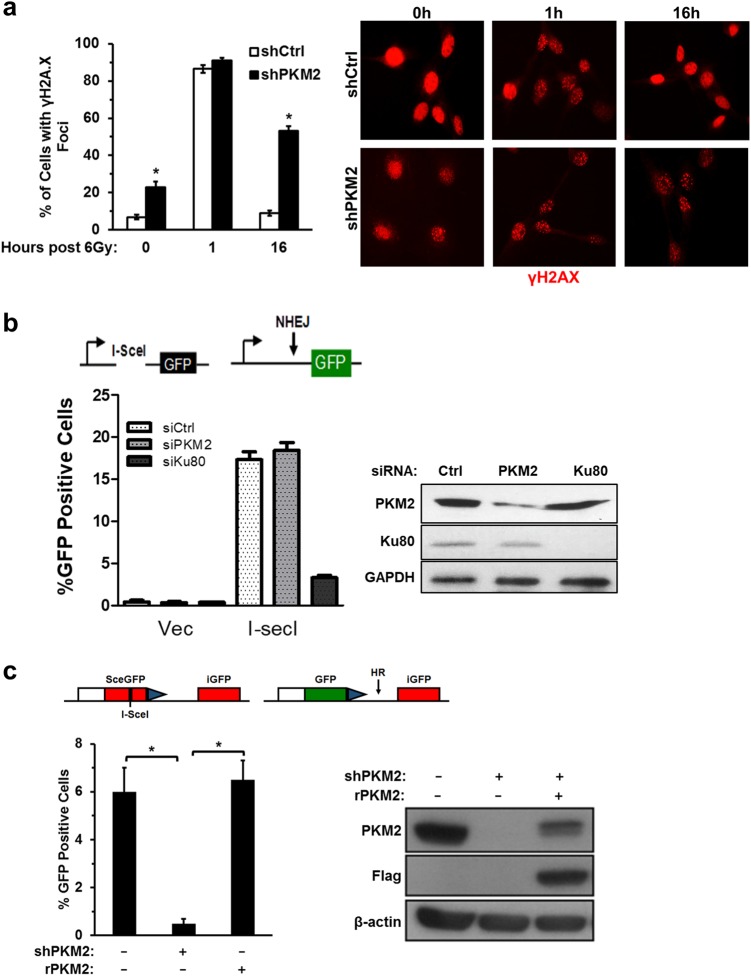Fig. 2.
PKM2 regulates HR-, but not NHEJ-mediated repair of DSBs. a U87 cells expressing shPKM2 were treated with 6 Gy, fixed, and analyzed for γH2A.X foci at the indicated time points. Data are the mean percentage of cells with foci ± SE (n = 3). Representative photos illustrating γH2A.X nuclear foci (red) in shCtrl and shPKM2 cells at 0, 1 and 16 h post treatment with 6 Gy. b Repair of DSBs by NHEJ was assayed using the U87 cell line-based chromosomal reporter system containing a single integrated GFP reporter with two I-SceI target sites in inverted orientation flanking an out of frame ATG upstream of the GFP reporter (see schematic). Cleavage by I-SceI removes the out of frame ATG, leaving non-compatible ends. Repair of the DSB by NHEJ results in GFP translation. Cells were transfected with control siRNA or siRNAs targeting PKM2 or KU80 and then transfected with pcDNA3.1/I-SceI. Resolution of DSBs by the NHEJ pathway was assessed by measuring the percentage of GFP-positive cells, with knockdown of KU80 serving as a positive control for disruption of NHEJ repair. Data are mean ± SE (n = 3). c HR-specific repair of DSBs was analyzed in U87 cells modified with a stably integrated DR-GFP chromosomal reporter system (see schematic). This system contains two differently mutated GFP genes oriented as direct repeats. The upstream repeat contains a single I-SceI site while the downstream copy is a 5′-3′ truncated GFP fragment. Expression of I-SceI in these cells generates a DSB that, when repaired by HR, results in expression of GFP. Cells were treated with control or PKM2-targeting shRNA and transfected with empty vector or vector encoding shRNA-resistant PKM2 (rPKM2). After 24 h, DSBs were induced by transduction with I-SceI-encoding adenovirus and resolution of I-SceI-induced DSBs by the HR pathway was assessed by measuring the percentage of GFP-positive cells 48 h later. Data are presented as mean ± SE (n = 3). *P < 0.05

